Shuten Dōji: Demon Lord, Hero of the Downtrodden

By Richard Milner
Staff Writer
20/10/2020
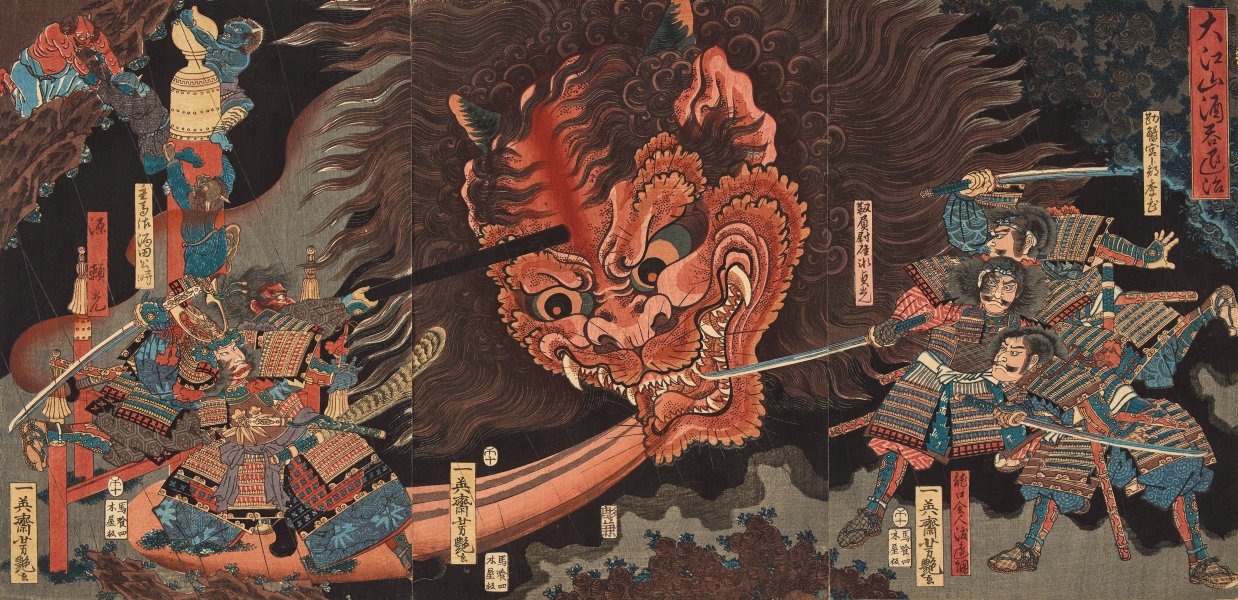
Shuten Dōji at Oeyama by Utagawa Yoshitsuya
The Japanese story of Shuten Dōji is, on the surface, a rather simplistic good vs. evil tale: a heroic warrior faces off against an evil, mountain-dwelling demon, kills him, and rescues some women. If this sounds at all like Mario defeating Bowser and rescuing Princess Peach, or any other save-the-maiden story, that’s because it basically is…until we go into the details.
While folklore about yokai (creatures akin to ghouls, goblins, or various spooky specters) or yūrei (once-living people damned in death to try and resolve the torments of their life) are told and retold in different variations, the story of Shuten Dōji is a singular, specific narrative that mythologizes actual historical people like Minamoto no Yorimitsu (948–1021). The story hasn’t changed since its retelling as a piece of Japanese genre fiction popular from the 14th-17th centuries called otogi zōshi, essentially morality tales meant to convey some lesson about common societal virtues or obeying the precepts of Buddhism.
The story of Shuten Dōji blends the horrific with the wacky and the mundane with the surreal into a weird, head-scratching hodgepodge of unexpected allegory, odd narrative threads, and deus ex machina.
The story of Shuten Dōji blends the horrific with the wacky and the mundane with the surreal.
As it goes:
During Japan’s Heian period (784–1185 CE) lived Raiko of the Minamoto clan, a highly skilled general who served five different emperors and became governor of several provinces. Around this time, legends grew of a monstrous figure terrorizing the capital Kyoto from a lair in Mount Oe. The creature was dubbed Shuten Dōji (“Drunken Boy”) because he was supposedly a heavy and wild drinker, and he led a cadre of criminals, social outcasts, and general reprobates who eventually took to kidnapping women from Kyoto – specifically the daughters of local politicians, whom they dismembered and devoured as food.
Raiko was sent to dispatch Shuten Dōji, and cleverly disguised himself and his band of warriors as monks to gain entrance to Shuten Dōji’s fortress (apparently monks wouldn’t be attacked). On the way up tough mountain terrain, Raiko’s group came across three old men who told them how to get into Shuten Dōji’s fortress. They also gave Raiko some sake to get the demon lord drunk, and thus more vulnerable, and a magic helmet for Raiko to put on before beheading him. As it turns out, these three old men were gods whose shrines Raiko had insisted the heroes visit.
When the warriors got to Shuten Dōji’s fortress, the demon lord welcomed them in and feasted them. At dinner, they were given human flesh to eat, possibly as a test (monks were strict vegetarians), but Raiko and his men happily enjoyed the food, saying that their particular sect allowed meat-eating.
At the same time, Shuten Dōji and his men drank the sake Raiko offered them, and their tongues loosened. Shuten Dōji talked about his youth, saying that he used to be human. There are a couple variations on the story at this point, but the most popular version is that Shuten Dōji was training at a temple, didn’t get along with his peers, was generally a drunkard, and had fun wearing a mask to scare people. Apparently, this was all it took to become a demon, because over time, the mask fused to his face, so that his inner self now faced outward. He fled into the forest, where, bit by bit, he accumulated a band of misfits and rogues.
All the while, Shuten Dōji kept saying that demons don’t lie. Only humans do.
Eventually, Shuten Dōji and his crew went to bed, and they invited Raiko and his group to stay overnight. While Shuten Dōji was sleeping, Raiko went into his room, put on the magic helmet, and rather ignobly chopped Shuten Dōji’s head off. The head shrieked and flew into the air, morphing into its true, horned, demonic form, and flew at Raiko, teeth gnashing, but it just bounced off Raiko’s protective headgear and fell to the floor. In its death throes, Shuten Dōji’s head repeated that unlike human, demons don’t lie, and expired. Triumphant, Raiko and his men returned the uneaten captives back to Kyoto, and gained a monetary reward, along with some female companions.
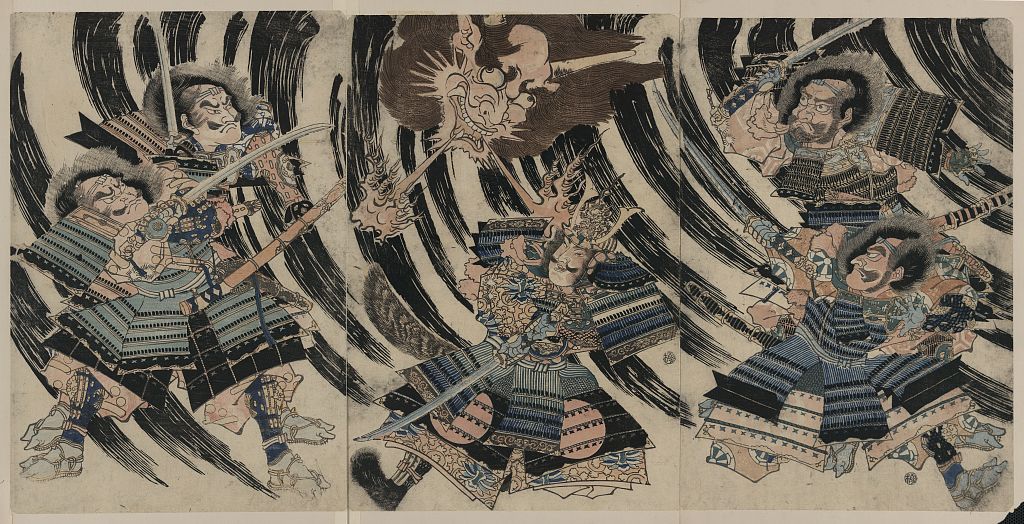
The tale of Shuten Dōji is one of Japan’s most iconic stories. It’s been catalogued in woodblock prints housed at the British Museum, the Smithsonian, and the Met, and deconstructed in academic articles as either a cautionary tale about alcohol abuse or a remonstration of medieval Japanese nobility. Its characters have been used in multiple video games, card games, and there’s even a bar in Kabukicho, Tokyo’s red-light district, named after the demon lord.
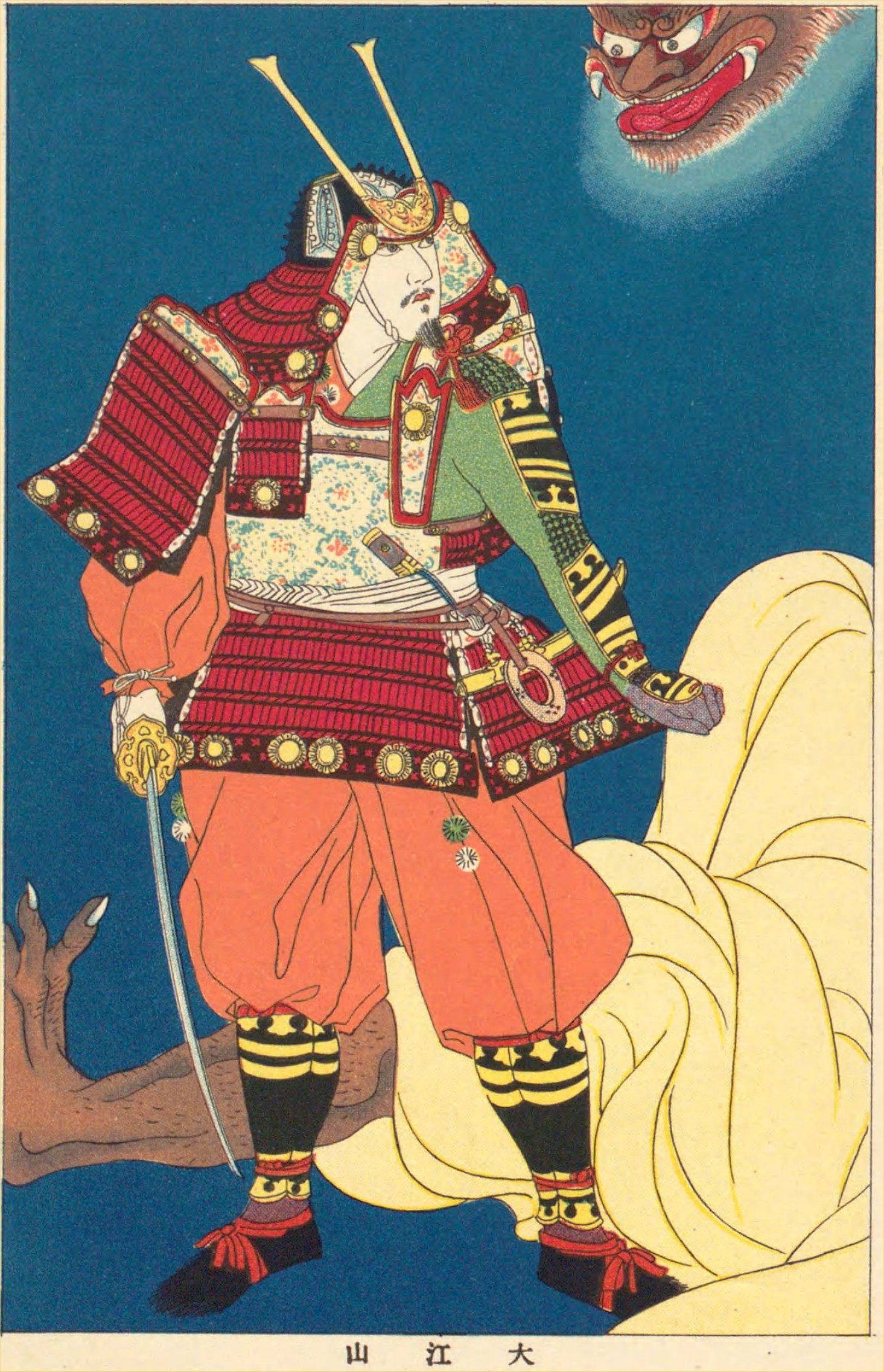
Raiko being attacked by Shuten Dōji’s severed head, by Settai Komura
For the story to remain popular for so long, there must be something about it that really resonates with people. And indeed there is, and it’s not just the simplistic “defeat the bad guy and save the girl” narrative, but the parts of the story that are at odds with it.
For instance, the demon Shuten Dōji is generally genial, a good host, exhibits remorse, has a sympathetic origins story, and is framed more as a misfit than a clear villain.
Raiko, on the other hand, is a rather drab hero motivated by obedience to the ruling class. He and his men impersonate monks and don’t hesitate to feast on human flesh, whilst planning to murder their host, thus confirming Shuten Dōji’s worst prejudices of humans as liars. When Raiko finally draws his blade, he doesn’t battle the demon lord like the warrior he supposedly is; he assassinates his foe whilst Shuten Dōji lies drunk and asleep in bed.
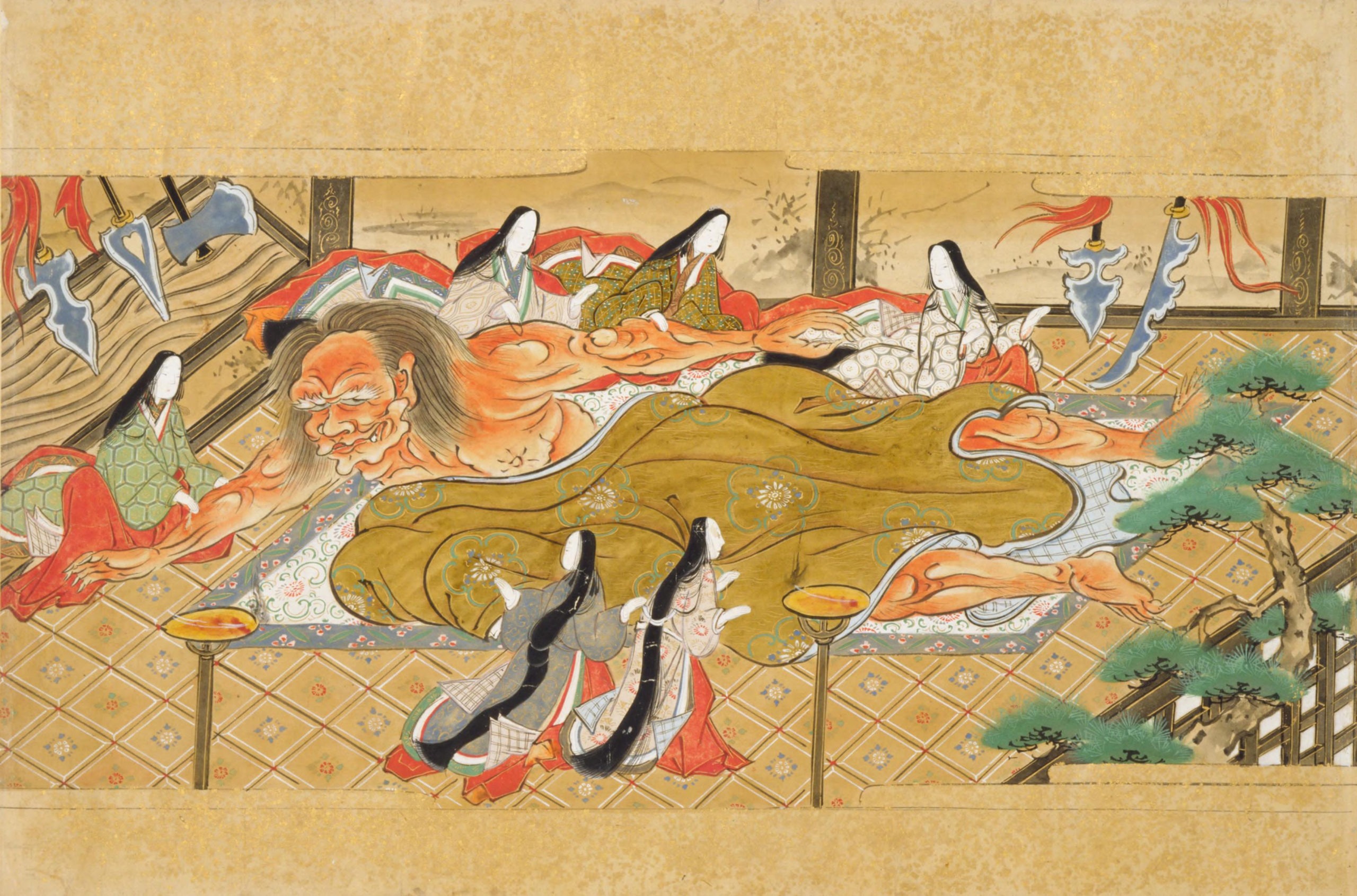
Shuten Dōji, by contrast, hides nothing and acknowledges his own nature, even if that nature is barbaric. He accepts himself, even if it means self-destruction, and in so doing, he severs his relationship to human society. The story’s lesson seems to be: hide your true nature behind a mask of normalcy (like an inverse version of Shuten Dōji’s childhood mask) in order to remain “human” and avoid becoming “demonic.” In fact, the story of Shuten Dōji is almost a subversion of traditional heroic virtues.
The Shuten Dōji story, while pre-dating the Edo period by hundreds of years, came into vogue when the Edo period’s ruling family, the Tokugawa Shogunate, hoped to increase their power by linking themselves to the illustrious Minamoto clan, which Raiko, the “hero” of the tale, hailed from. It’s unclear if the Tokugawa clan actually commissioned the retellings of the Shuten Dōji story as an otogi zōshi highlighting their valiant heritage, but we can assume they hoped to benefit from the association. It is debatable, however, how effective this Edo-era propaganda campaign was, given the subversive nature of the Shuten Dōji story, which had many people sympathizing more with the demon lord than with the supposed hero.
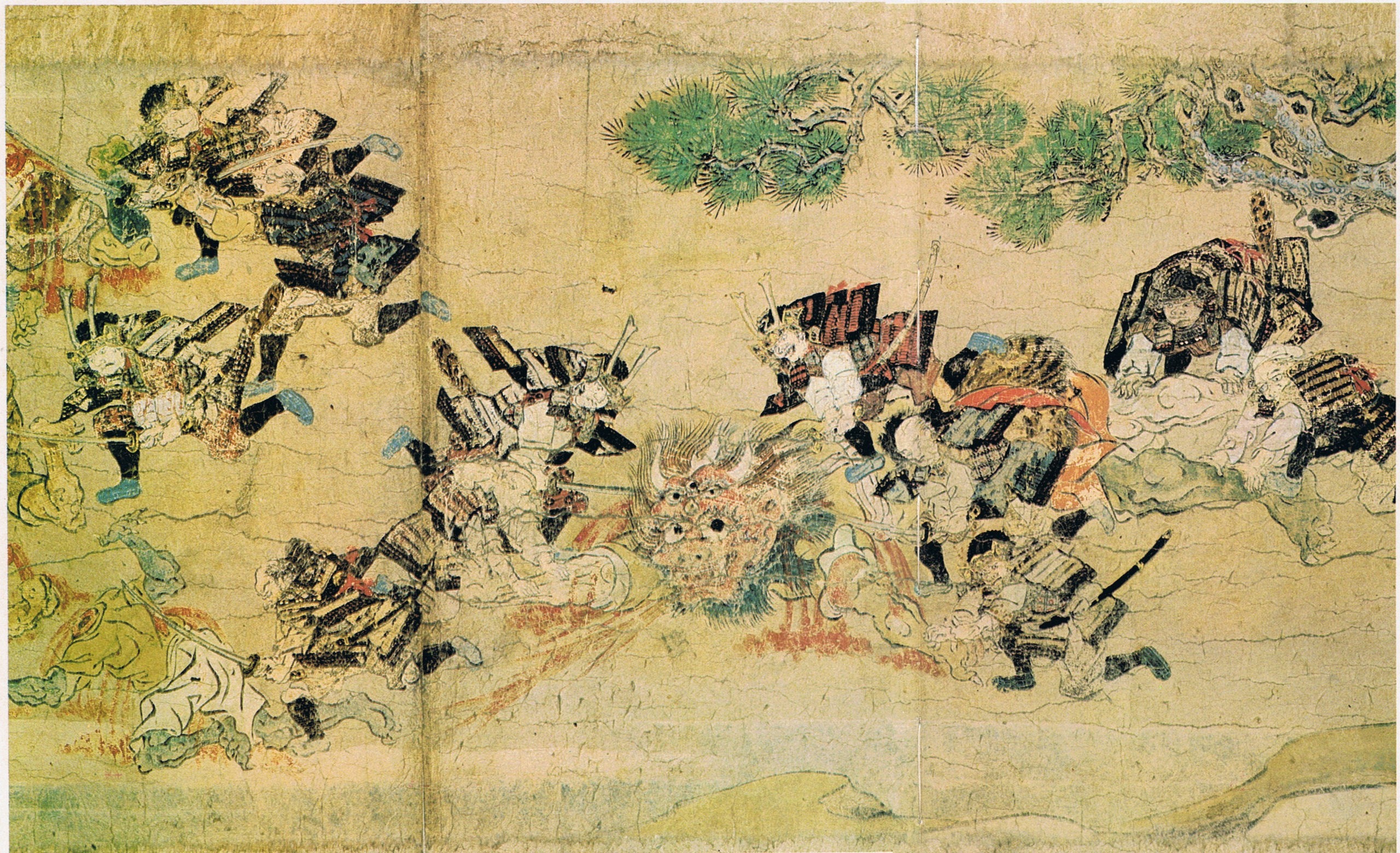
Raiko and his band brutally murder Shuten Dōji
It’s been suggested that the Shuten Dōji tale was a clever jab at the aristocracy of the time, a veiled critique of their treatment of the underclass. After all, who else would be rescued but the daughters of the rich? And what recourse could the poor, dejected, misfits of Japanese society have except to drink, much like a modern-day homeless person under a bridge in Shinjuku on a cardboard bed with a cheap cup of convenience-store sake in his hand? And how would such a person, banished from the normal, prim, world of job-searching, apartment-hunting, and reputation-building, survive without turning to a life of crime and forming a gang with other misfits?
In this way, Shuten Dōji is an anti-hero. He’s not a monster that feeds on the helpless – those he preys upon are the offspring of the snobby and privileged. He represents the marginalized members of Japanese society, or at least those brave enough to not bullshit about their true desires.
Shuten Dōji represents the marginalized members of Japanese society, or at least those brave enough to not bullshit about their true desires.
There are many in Japanese society today who fall within this underclass: the historical caste of untouchables, burakumin. Burakumin have roots in medieval peasantry, and were a part of an actual, legal caste of Japanese citizens that included butchers, tanners, undertakers, and other unpleasant but essential trades during the Edo period (1603-1868). The burakumin caste was abolished in 1871, but extreme prejudice exists to this day against families and individuals associated with what was considered a low, unclean stratum of society. The lowest of the low burakumin were referred to as eta, which translates to “abundance of filth.”
The Burakumin Liberation League was founded in 1955 to attain equal rights and opportunities for the descendants of burakumin around Japan, which at the time numbered at about 3 million people in over 6,000 communities. These communities were largely ghettos and public housing, and even by the mid 1970s, 100 years after the abolition of the caste system, a 300-page list of burakumin descendants was discovered circulating amongst employers informing them of precisely who to blacklist. In 2009, there was public outcry after the locations of historical burakumin villages appeared on Google Earth. Google was accused of prejudice just for drawing attention to Japan’s shameful practice of institutionalized discrimination.
Shut out from much of “respectable” society, burakumin often fall in with the yakuza, Japan’s organized crime syndicates. In fact, the first yakuza were burakumin, the despised and ostracized who, tired of being victims, turned to a life of crime and took their revenge on a society that refused to look at its own demon mask.
Thus, the demon Shuten Dōji, with his gang of ne’er-do-wells, can be seen as the prototypical yakuza boss, and the rise in popularity of his story coincides precisely with the rise of the yakuza during the Edo period.
Today, yakuza play the role of anti-hero boogiemen in Japan similar to the part played by errant-in-chief Shuten Dōji and his gang. The yakuza live outside conventional moral boundaries and job roles, and are involved with many shady industries, including prostitution. They’ll come and take your daughters, upstanding citizens, just like how Shuten Dōji abducted those virtuous maidens.
Even if they’re not accepted into society with open arms, however, the yakuza are tolerated by the authorities, and are often even respected. They are highly influential, and some groups even have their own websites and business cards. They traffic drugs and arms, but also, for example, handed out food to the needy during the coronavirus pandemic.
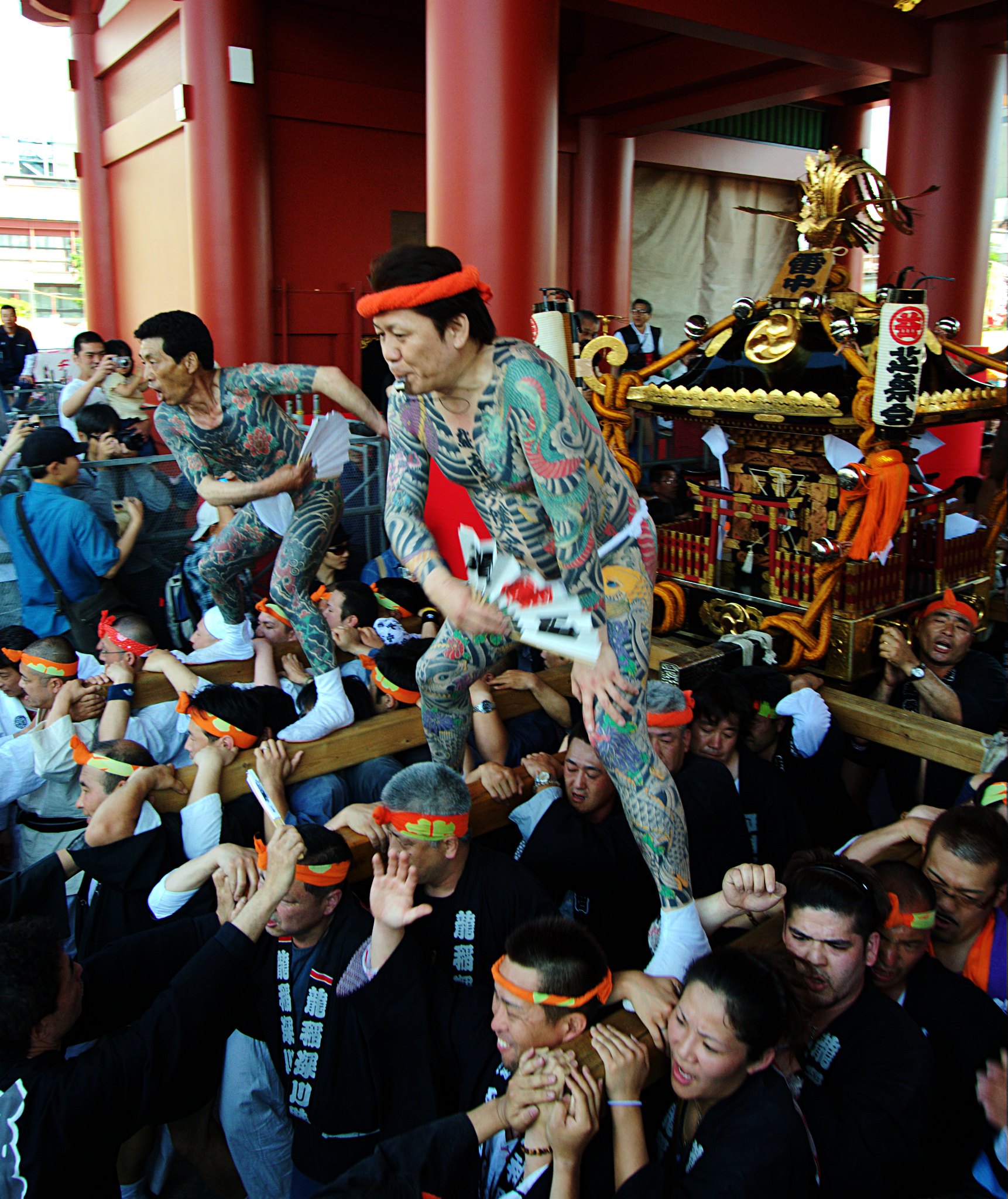
Yakuza festival in Asakusa, Tokyo (Picture Credit: Colin and Sarah Northway)
Author Manabu Miyazaki, who has written more than 100 books on the yakuza, sums them up as follows: “Yakuza are dropouts from society. They’ve suffered, and they’re just trying to help other people who are in trouble.”
Is this too generous an assessment of a crime syndicate? Perhaps. But if that’s what demons do, maybe it’s better than being a lying human.
